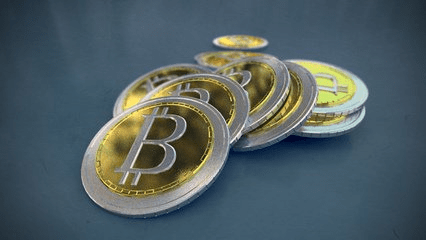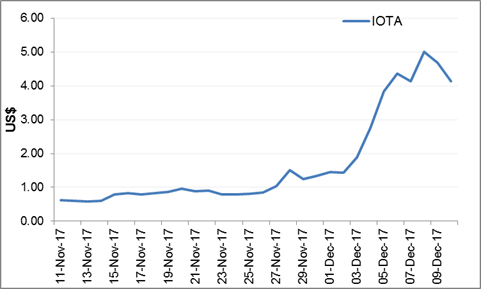There was a time when equity in any company suffixed with dotcom sold at jaw-dropping valuations. Venture capitalists, large institutional investors, and even individual investors were betting big on the ‘internet companies’— in search of a next big thing.
Such fads aren’t new to the investors’ fraternity. When coupled with easy money, investment fads can captivate even the most sensible investor and keep them mesmerised until the bubble has cast shadow on their wealth.
Those who bought tech stocks during the dotcom boom burnt their fingers at the turn of the millennium, the dotcom bubble burst and many companies never touched those highs ever again...
Fast forward to 2017…
There’s another bubble in the making.

(Image source: freeimages.com)
Welcome to the La la land of cryptocurrencies.
Bitcoins have garnered attention from the media and investors at large —being the most popular of all cryptocurrencies.
As you may know, cryptocurrencies are virtual currencies which don’t recognise boundaries and are free from Government policy controls. Bitcoin returns have doubled in last one month, soaring up nearly six times in last five months.
IOTA —another cryptocurrency but less-known, too has witnessed a massive jump in its value over the last one month.
IOTA movement: effect of partnerships with tech giants

Data as on December 10, 2017
(Source: Coinmarketcap, PersonalFN Research)
Founders of IOTA, claim that the currency covers up flaws of the Bitcoin system. The total supply of Bitcoin is limited to 21 million and transacting in them is a slow process. So far, 16.7 million Bitcoin have been mined. The last Bitcoin is expected to be mined by 2140. Bitcoin miners keep the system going and ensure its security as well. Thus, to use the Bitcoin infrastructure parties involved in the transaction have to pay fees.
Bitcoin uses blockchain technology. Typically, a Bitcoin miner compiles different transactions and puts them in a global blockchain for which they receive a reward. In other words, this creates a systemic discrimination between the issuer of the transaction and the approval of the transaction.
To overcome these functional issues and create a level-playing field for all users, IOTA relies on an emerging technology called Directed Acyclic Graph (DAG)––––popularly known as ‘Tangle ledger’ –––an advanced step in the evaluation of blockchain technology.
What are the claimed advantages of IOTA?
- It’s scalable
- Fast to transact
- Free of cost
- Resists large-scale quantum computing attacks
A person issuing an IOTA transaction has to approve other two transactions, thereby contributing to the network's security. Higher the number of people joining the network, faster the pace of transactions.
IOTA is a cryptocurrency primarily designed to meet the requirements of the Internet-of-Things (IoT) industry.
Case for IOTA
In layman’s language, IOTA is a currency to trade data. As per the IOTA Foundation estimates, there will be over 75.44 billion devices connected all over the globe by 2025. And by 2025, 95% of the data will be gathered in real-time by the connected devices, as per the estimates of IDC.
In the real world, data will increasingly become the foundation of many corporate decisions. Exchange of data is expected to grow crucial for innovation and streamlining business operations. And thus, data may potentially open up huge profiting opportunity for many businesses. At present, a significant amount of data gets classified into silos and goes to waste. But as more companies join the IOTA platform, machine-to-machine data sharing will become a serious business.
Interestingly, you can’t directly buy IOTA using any conventional currencies, but can only exchange cryptocurrencies against it. In this process, cryptocurrencies are likely to negate one another.
Companies such as Microsoft, Samsung, Fujitsu, and Cisco have already partnered with IOTA and other such as Accenture and Bosch have also shown keen interest.
IOTA is relatively a new market, and for now, the players are sharing data pertaining to air quality, weather conditions, etc. However, considering the capabilities of the players involved, the potential of IOTA looks unimaginable, especially if it continues to draw powerful partners.
But the worrisome factor is…
What’s the guarantee that “partners of IOTA” won’t use it as a grey market to trade data? Like any other cryptocurrency, “secrecy” is claimed to be the inbuilt feature of IOTA.
Soon after inking a partnership deal with tech giants IOTA’s ranking improved considerably. It’s now the fourth largest cryptocurrency after Bitcoin, Ethereum, and Bitcoin Cash. At present, it has the market capitalisation of over US$ 12 billion.
But there’s a bubble blowing up in most of the cryptocurrencies, including IOTA.
And, it’s difficult to predict how much bigger it will become before it finally bursts.
So, needless to say, IOTA, like most other cryptocurrencies, might experience extreme volatility depending on developments in the arena and volumes on the counter. However, considering the scope of the market it aims to capture, which is likely to be dominated by B2B (Business to Business) transactions, it could cover some more miles.
What should investors do?
Investing in cryptocurrencies, especially in the absence of any regulation, is like playing with fire. It can be hazardous to your wealth and health.
Therefore, considering the pros and cons, individual investors would be better-off not participating in the bubbly cryptocurrencies. Taking a cue from the dotcom boom and bust, it appears to be the only prudent decision to make.
Sit out the rally in cryptocurrencies and invest in more conventional avenues such as mutual fund schemes.
If you are looking at portfolio of mutual fund schemes to invest, that is strategically structured based on the core and satellite approach to investing, consider PersonalFN’s “Strategic Funds Portfolio for 2025”. ‘Core and satellite’ investing is a time-tested strategy.
Your ‘core portfolio’ will consist of large-cap, multi-cap, and value style funds, while the ‘satellite portfolio’ will include funds from the mid-and-small cap category and opportunities style funds. The core portfolio offers stability by investing in funds that promise sturdy returns and have a strong ability to manage downside risk. The satellite portfolio provides the opportunity to support the core by taking active fund calls determined by PersonalFN's extensive research on mutual funds.
And that’s not all. You will also master the art of astutely structuring the portfolio by assigning weightages to each category of mutual funds and the schemes you select for the portfolio. PersonalFN’s “The Strategic Funds Portfolio for 2025” is geared to potentially multiply your wealth in the years to come. Subscribe now!
Happy Investing!
MustRead
Best Midcap Funds For 2018. Look Before You Leap!
Add Comments